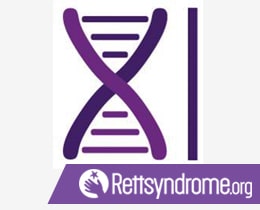In last week’s post, we recognized Down Syndrome Awareness Month by celebrating the accomplishments of people with Down Syndrome. Since October is also Rett Syndrome Awareness Month, this week’s post will highlight this relatively unknown neurological disorder that affects approximately one in 10,000-15,000 female births.
One of the few neurological disorders that is found almost exclusively in girls, until recently, Rett Syndrome was considered a form of autism. Like children with autism, girls with Rett appear to grow and develop normally in the early months of life. But between their sixth and eighteenth months, baby girls with Rett Syndrome typically exhibit signs of stagnation or regression.
As described by Rett Syndrome.org, after affected girls reach 6-18 months, “a period of regression then follows when she loses communication skills and purposeful use of her hands. Soon, stereotypical hand movements such as hand washing, gait disturbances, and slowing of the normal rate of head growth become apparent. Other problems may include seizures and disorganized breathing patterns while she is awake, an abnormal side-to-side curvature of the spine (scoliosis), and sleep disturbances. In the early years, there may be a period of isolation or withdrawal when she is irritable and cries inconsolably. Over time, motor problems may increase, but in general, irritability lessens and eye contact and communication improve.”
Some believe that girls with Rett Syndrome understand everything that is going on around them, though they are unable to express themselves verbally. Many girls communicate with their eye gaze. Rett Syndrome.org suggests parents “consider using eye gaze, head pointing, communication boards, switches and voice output communication devices” to help their girls to express themselves. Enabling Devices offers a range of products well suited for children with disabilities caused by Rett syndrome. See our catalog, for additional information.
In 1999, Huda Zoghbi, a molecular geneticist at Baylor College of Medicine in Houston, discovered that Rett syndrome is caused by a genetic mutation, on the MECP2 gene. The discovery confirmed that Rett is a neurological disorder with a genetic cause, distinctive from other autism spectrum disorders.
Despite the distinction, researchers believe that MECP2 gene and continued research on Rett syndrome, could lead to keys to better understanding, treatments and eventually, cures for other disorders including autism, schizophrenia, bipolar disorder and Alzheimer’s.
In 2007, another breakthrough in Rett syndrome research occurred when “Dr. Jacky Guy and other scientists in Professor Sir Adrian Bird’s group [at the University of Edinburgh] introduced a modified MeCP2 gene into Rett model mice that allowed controlled expression of normal MeCP2 protein. The mutant female mice carrying this modified gene exhibited the characteristics of Rett syndrome until normal MeCP2 expression was activated, after which they rapidly regained normal behavior.
Scientists noted that “this striking result indicated that the developmental or degenerative changes seen in Rett patients are reversible, and overturned previous understanding of the disease.” Three years later, “the first disease-modifying human clinical trial began, a risk investment made by IRSF in conjunction with other notable research institutes, paving the way for further clinical trials,” according to the International Rett Syndrome Foundation.
Then, in 2013,a study by Molecular biologist Gail Mandel, of Oregon Health and Sciences University, bolstered 2007 findings.
“The treated mice showed profound improvements in motor function, tremors, seizures and compulsive movements. In addition, the gene therapy restored their abnormally small brain cells to normal,” reported Autism Speaks.
In 2015, there was more good news. A team headed up by Nicholas Tonks reported having found “clear evidence in mice that we can actually reverse symptoms – supporting the concept that the disorder is not irreversible and may be amenable to treatment with small molecule drugs.”
Currently, multiple research projects and clinical trials are underway in Europe and the United States. We are closer than ever before for finding treatments and cures for Rett and by extension, for many related disorders.
To learn more and to get involved in raising awareness and funds for Rett Syndrome research, visit Rett Syndrome.org.


